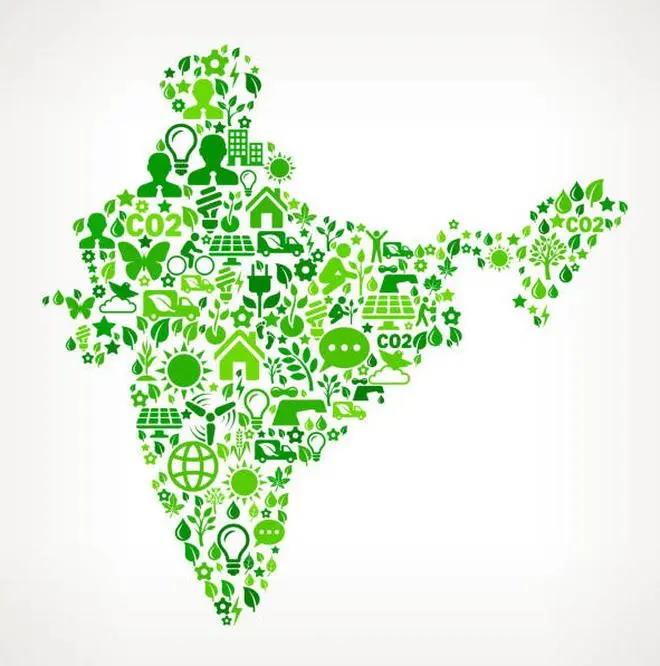

A goal was set for each country to reduce its national emissions and adapt to the impact of climate change.

The salient features of India’s NDCs include reducing emissions intensity of the GDP by 33 to 35 per cent by 2030 from the 2005 level; achieving about 40 per cent cumulative electric power installed capacity from non-fossil fuel-based energy resources by 2030; creating an additional carbon sink of 2.5 to 3 billion tonnes of CO2 equivalent through additional forest and tree cover by 2030.
India has also pledged it will better adapt to climate change by enhancing investments in development programmes in sectors such as agriculture, water resources, the Himalayan region, coastal regions, health and disaster management.

On the funds front India pledged to mobilize domestic and additional funds from developed countries to implement its NDCs. It would also build capacities, create domestic framework and international architecture for quick diffusion of cutting-edge climate technology.
The achievement of NDCs will determine whether the world achieves the long-term goals to reach global peaking of greenhouse gas (GHG) by limiting warming to 2 degrees Celsius by 2025.

The targets can be achieved by the use of science to strike a balance between anthropogenic emissions (derived from human activity) and removals of GHGs by improving the green cover.
The Paris Agreement requires NDCs to be submitted by member countries every five years to the United Nations Framework Convention on Climate Change (UNFCCC) secretariat for review and modification.
Published on July 10, 2022

Comments
Comments have to be in English, and in full sentences. They cannot be abusive or personal. Please abide by our community guidelines for posting your comments.
We have migrated to a new commenting platform. If you are already a registered user of TheHindu Businessline and logged in, you may continue to engage with our articles. If you do not have an account please register and login to post comments. Users can access their older comments by logging into their accounts on Vuukle.